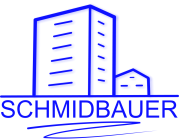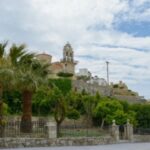Agios Myronas ist 18 Kilometer von Heraklion entfernt und liegt auf einer Höhe von 440 Meter. Agios Myronas ist eine der 100 Städte von Homers kretischer Ekathopolis. Eine Stadt mit Panoramablick, Geschichte und Traditionen.
Der Name der Stadt stammt von dem Dorfmärtyrer, Bischof von Knossos und Gortynis, Myronas (3. Jahrhundert), der bei den Verfolgungen von Dekios (249-251) den Märtyrertod starb und der Schutzpatron ist. Sein Grab befindet sich in einem höhlenartigen Kreuzgang auf der Westseite des Hügels, auf dem die Kirche des Heiligen gebaut wurde.
Das beeindruckende Stadtbild des Dorfes (historische Gebäude, prächtige architektonische Strukturen früherer Zeiten usw.) wurde durch das Erdbeben von 1856 vollständig zerstört. Trotz aller Katastrophen der Stadt wird der Besucher nicht nur von der traditionellen Architektur beeindruckt sein. Sehenswert ist auch die dreischiffige Pracht des Schutzheiligen, die eindrucksvolle Schuluhr und der Steinbrunnen (1906). Sie werden Mythen und Traditionen „hören“ (fossiler Drache). Weiterhin genießen Sie die herrliche Aussicht, Restaurants und Cafés, Produkte und den Wein „Olympia“ aus der Region.
Agios Myronas is 18 kilometers from Heraklion and has an altitude of 440 meters, is built on the two-fold of ancient Rake (one of the 100 cities of Homer’s Cretan Ekathopolis) with panoramic views from all its parts and has a rich history and traditions.
The name of the town comes from the village martyr, bishop of Knossos and Gortynis, Myronas (3rd century) who martyred in the persecutions of Dekios (249-251) and is the patron saint. His tomb is in a cavernous cloister on the western side of the hill where the church of Saint is built.
The great urban image of the village (historical buildings, magnificent architectural structures of earlier times, etc.) was completely destroyed by the earthquake of 1856. Despite all the disasters suffered by the town, the visitor will be impressed by the examples of traditional architecture typical of the three-aisled grandeur of the patron saint, the impressive school clock, the stone fountains (1906), will „hear“ myths and traditions (fossilized Dragon), will enjoy apart from the magnificent view, rich traditional beauties from pure local products to restaurants and cafes and local wine „Olympia“.


